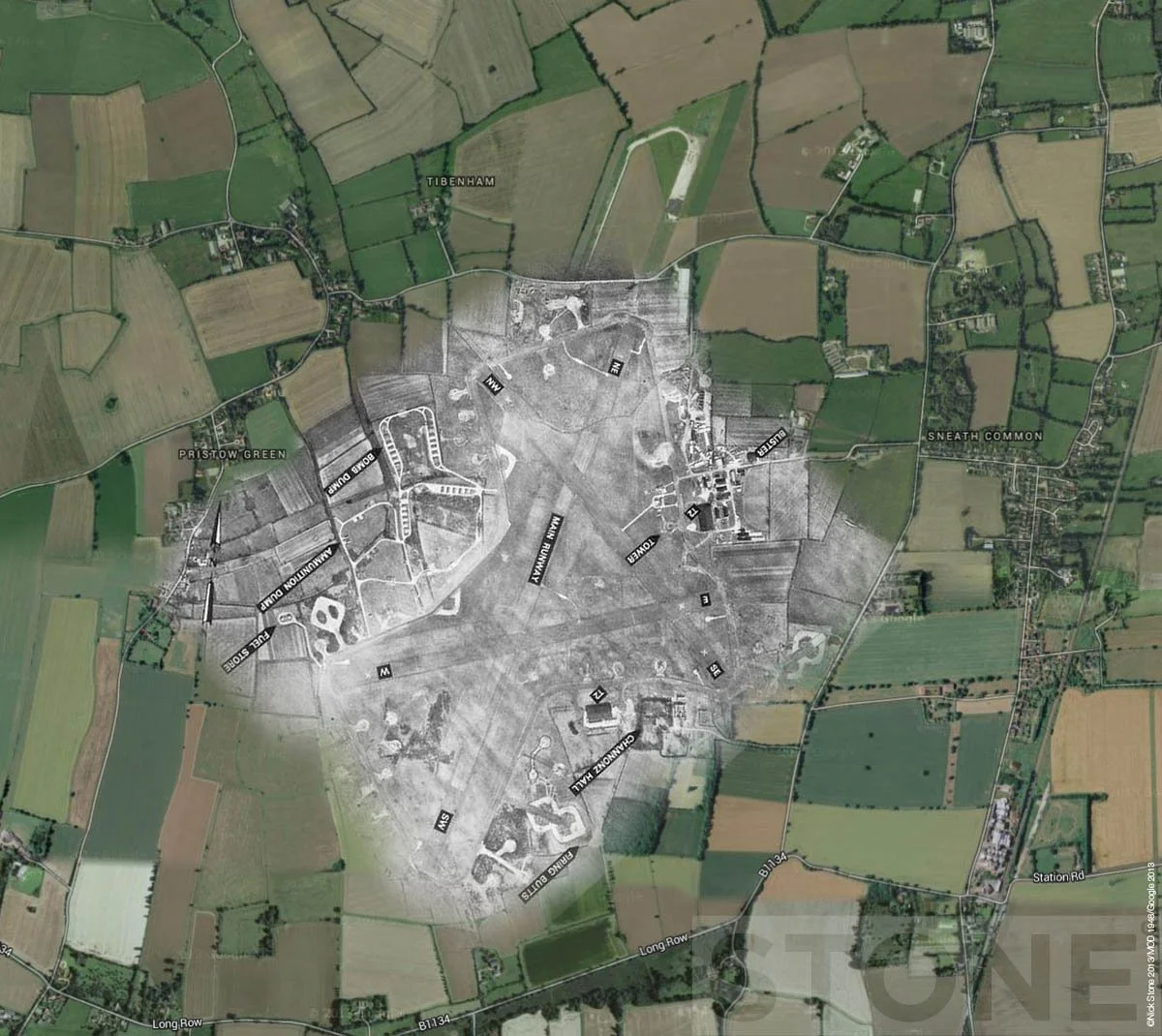
History of Tibenham Airfield
The early dawn of aviation in the parish of Tibenham started in WW1 when in 1916, an Air Defence site was set up in the fields to the West of the current airfield, to counter the Zeppelin raids on East Anglia. But it wasn’t until WW2 that station 124 was created, along with all the others that formed the “Fields of Little America” in WW2.
Although it was called Tibenham, most of the base buildings and living quarters on Station 124 were actually in the parishes of Aslacton and Great Moulton. Built in 1941/2 by W. and C. French Ltd, the Class A airfield was opened in 1943 with three standard concrete and tarmac runways; the primary of 2,000 yards and two secondary each 1,400 yards long. They were all the standard 50 yards wide. In addition, there were 35 ‘frying pan’ hard-stands and a further 17 ‘spectacle’ hard-stands. Two T2-type hangars were built for indoor maintenance, although most maintenance was performed on the hard-stands in all weathers.
The American Eighth Army Air Force was formed in January 1942, but it wasn’t until November 1943 that the 445th BG arrived at Tibenham operating as part of the 2nd Air division United States 8th Airforce. Consisting of 4 squadrons 700 – 703, flying B24 Liberator bombers, the famous Hollywood actor Jimmy Stewart flew many combat missions as commander of the 703rd squadron, and always maintained a close relationship with the airbase, visiting the gliding club on many occasions in the 80’s and 90’s. Between 13 December 1943 and 25 April 1945, the 445th flew 280 missions from Tibenham. They lost 108 aircraft in action, and, during that period, 554 aircrew lost their lives; a permanent memorial at the airfield bears testimony to their bravery. The 445th departed on 25th of May 1945.
For a little while the RAF used Tibenham’s runways, mainly for landing Lancaster bombers flying on Operation Dodge, repatriating ex-PoWs from Germany and Italy. Then in August 1945, Tibenham aerodrome was just put into ‘care and maintenance’ and left. The local council took over some and altered a few of the now-empty Nissen huts which were used as temporary homes for bombed-out families until proper council houses could be provided.
The airfield lay almost derelict for nearly ten years, with just an occasional maintenance man on site; the airfield slowly fell into disrepair, with pilferage and vandalism taking its toll until, in 1955, the airfield was given a new lease of life.
The cold war was heating up, the Russian Bear was exercising its claws, and the UK had started to use ‘V’ bombers as its main nuclear defence. Tibenham was listed as a base for the big bombers, so the main runway was lengthened and strengthened with another foot of concrete and a layer of asphalt on top of the original 1940s construction. Work continued apace to get it completed, just in time for the project to be cancelled in the next defence review.
The Ministry of Defence officially closed the airbase in 1959 and the Norfolk Gliding club was founded at the airfield in February that year and continues to operate from the site to this day. In 1987, after some lengthy negotiations, the club bought, with assistance from the local authority, former members of the 445th Bomb Group and club members, through donations and low interest loans, 32 acres of concrete and 22 acres of arable land at a total cost, of £209,500. In 1990, the remainder of the airfield was offered for sale. Although not all of this land was needed for the club’s operations, purchase by a third party could have hindered flying. Buyers were found for some areas of agricultural land but the net cost of this purchase to the club was £201,000. Because of this foresight, the Gliding club can still afford to operate the airfield, and also host a considerable general aviation community.
©Nick Stone (invisibleworks.co.uk)



